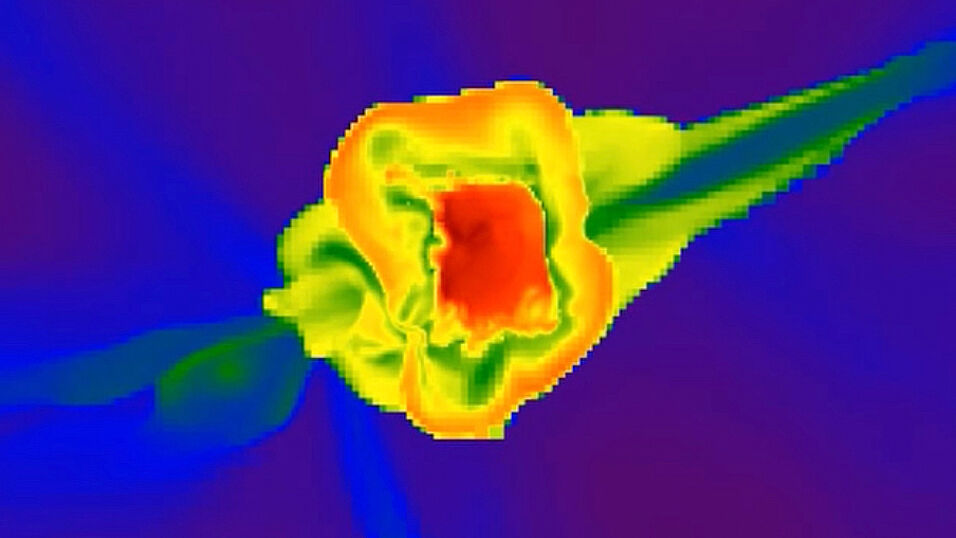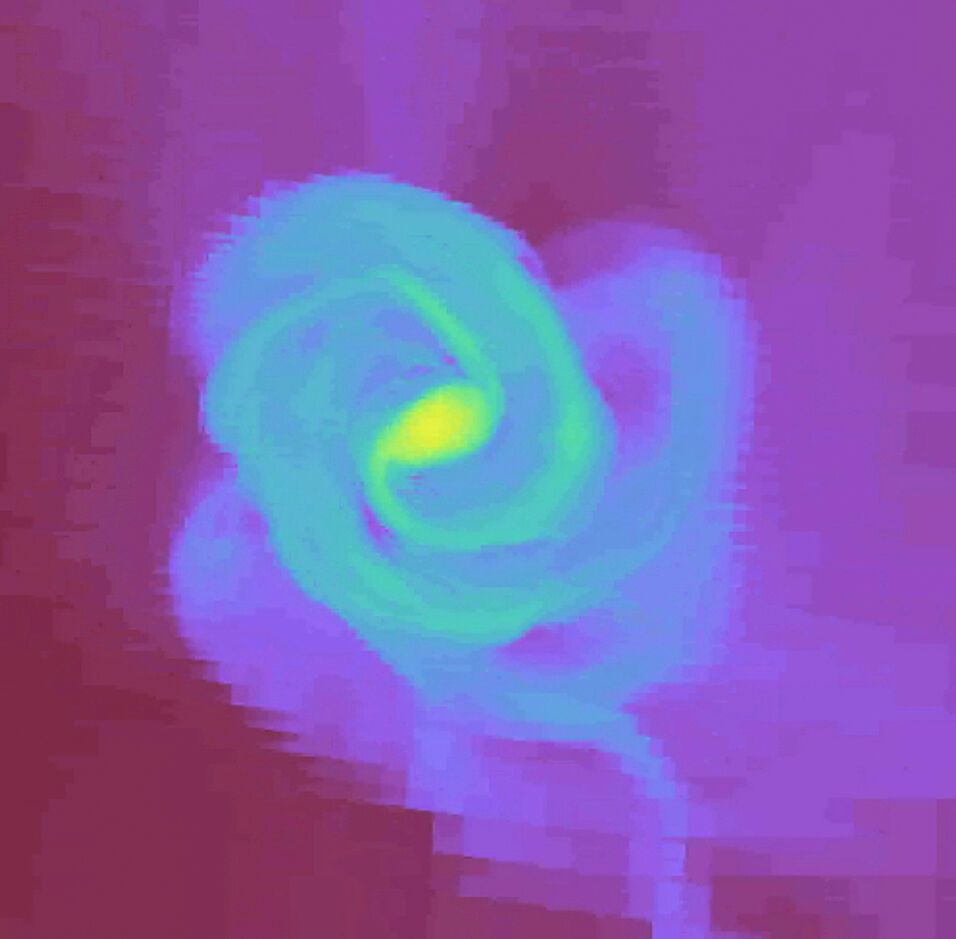When people ask him if he likes the stars in the sky, Dan Whalen usually answers: "The stars I study all died 13 billion years ago." The US-American astrophysicist works on topics that most people only get to know from Star Wars and other Science Fiction movies: "I build supercomputer simulations at the birth of the earliest structures in the universe, the formation of the first stars - how they blew up, how they polluted the early universe with the first heavy elements required for the later formation of planets and life and the genesis of the great earliest black holes", the researcher from the Institute of Cosmology and Gravitation at the University of Portsmouth says.
Ida Pfeiffer Professor in Vienna
Since March 2019 Dan Whalen is busy as Ida Pfeiffer Professor at the Department of Astrophysics at the University of Vienna, lecturing on "The primordial universe" and working on his latest research projects. During his scientific sabbatical, he will concentrate on linking models of the first supernova explosions to models of planetary disk formation to understand the earliest times when rocky planets and life were able to form. "That's a big bridge to cross, so we're starting just by looking at dust and water formation of primordial supernova remnants to begin with and then we'll look at how that material might have collapsed into the first planet forming disks at high redshift", he explains.
For this, Dan Whalen works at the Department of Astrophysics with Bodo Ziegler and Manuel Güdel, who has a planetary disk formation research group. “The hope is if I can give them elemental abundances from supernova explosions, we could put that to models and see if rocky planets could have formed from these materials and go from there."
Scientists as heroes
The inspiration to go into science already came, when he was a child, Dan Whalen says, reading Science-Fiction-Novels, watching shows on the Discovery Channel and Science-Fiction-Movies, where the heroes were the scientists figuring out the problem. The idea to go into astrophysics came only later, when he was an undergraduate working at Los Alamos National Laboratory in the summer to pay for college and to get research experience. Later in his career, the Los-Alamos-Connection would turn out crucial for his research, because as a Post-Doc-Student, he went back to the laboratory and used programmatic radiation transport codes to model the first cosmic explosions. "That expertise led me to publish twelve to thirteen papers on that topic", he says.
"Our product is papers"
In fact, Dan Whalen frames research in terms of papers: "Our product is papers, only then have we done science“, he says. „We need those records." Having papers is also the goal to progress, he adds: " It helps you go through the wasteland, not knowing if you will solve the problem that is in front of you. In my opinion, research is much about endurance. Intelligence helps, but much more important is the willingness to persevere - to keep going and work on the problem."
Besides his research, Dan Whalen teaches and oversees PhD-students and Post Doctoral researchers as Associate Professor in Portsmouth. "Working with my PhD-Students is actually one of the things that keeps me going", he says. "When they come with a problem, one of the satisfying things is to talk it out with them.“ He also uses to share his fascination with scientists in Invited and Review Talks on the first supernovae all over the globe, from Russia to the Easter Islands.
"Good things happen along the way"
Where does he see the benefit of his branch of research for society? "When you push to understand the universe, a lot of other really good things happen along the way, like the CCD at the heart of our cellphone cameras, that came from astronomers or the computer chips in our mobile phones, that came from the Apollo space program“, he says. „And if Hubble hadn't opened the Universe, I don't know if some of my students would be doing PhDs today, later solving problems for companies and other institutions."
"Curiosity is what drives me"
What fascinates him most in his work on the stellar evolution is the curiosity about how things work and happen, to have new experiences and develop new skills, the father of a newborn baby says: "If I lose that curiosity, I'll go and do something else. Because curiosity is what drives me." (isa)
- Ida Pfeiffer Professor Dan Whalen's research interests include the first stars and supermassive black holes, supernovae, the first quasars and how water formed in the earliest galaxies and later led to the appearance of life in the universe. Currently, he is working on three parallel black hole (BH) research lines:
- The formation of rapidly accreting supermassive stars (masses of 10^4 - 10^5 Msun) during catastrophic baryon collapse in hot, dead primordial halos of masses > 10^7 Msun: red stars, blue stars, pulsations, explosions (?)
- The collapse of these stars into direct collapse BHs (DCBHs) and birth of a nascent quasar - breakout of its X-rays into the early intergalactic medium (IGM)
- The subsequent evolution of these DCBHs into billion solar mass quasars by redshifts z > 7, about 700 Myr after the Big Bang
- Synthetic observables in the near infrared (NIR) and 21 cm for all three research lines.
Furthermore, he is also working on the formation of water in primordial Supernova remnants and the conditions in which the first rocky planets (and life) could have formed in the universe.



